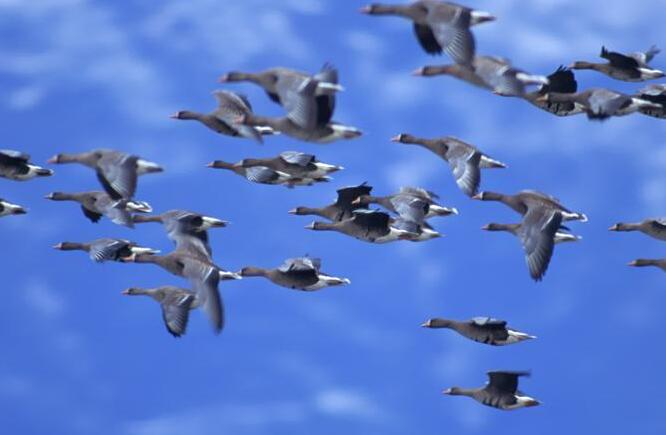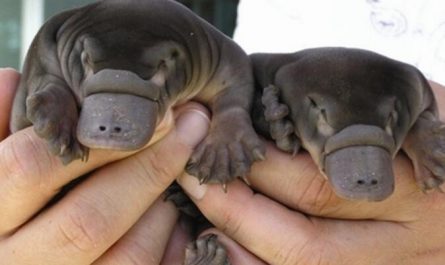Reasons for migratory birds
The migrating distance of migratory birds varies from a few kilometers, or just flies from the southern slope to the northern slope of the mountain. The far ones can fly tens of thousands of kilometers. For example, Arctic terns breed in the Arctic and fly to the Antarctic to spend the winter. They travel 22,000 kilometers and spend most of their lives in flight. The golden gull migrates from the Arctic Ocean to Argentina in the southern hemisphere every autumn to live in the winter.
But why do these birds fly around in groups every spring or autumn? What forces force them to travel so long? How do they travel back and forth accurately? Scientists have been there for many years. I have concentrated on studying these issues, but so far, there are still divergent opinions. However, two main views have also formed.
One is the “energy consumption theory”. Scientists holding this view believe that the migration of migratory birds is driven by their own “energy consumption”. Migration requires a lot of energy. Birds migrate from the north to the south, and consume 6 times more energy day and night than under the conditions of settlement at 30°C. Therefore, in the winter season, “migration” consumes much more energy than “settlement”. In addition, birds that “settled” in the north must wear thick feathers in late summer and early autumn to withstand the cold wave, and the energy required to prepare feathers is equivalent to the energy required for migratory birds to fly each year. However, this is only in terms of energy consumption. In fact, in winter, birds with long-distance migration habits do not have dense feathers on their bodies and lack food for overwintering, so it is impossible to overwinter in the north.
The other is “genetic induction theory.” Some scientists believe that the migration of migratory birds is the result of heredity. This migration habit can be traced back to the ice age of 10,000 BC. When the snow and ice season in the northern hemisphere arrived, some waterbirds flew away from their hometowns to find places that were conducive to foraging. When these waterfowls migrated for the first time, other waterfowls stayed in their hometowns. However, in the autumn of the following year, when the cold wave struck again, the waterfowl who had not migrated last year were induced by their companions to join the migration team. Year after year, the migrating team gradually expanded and finally formed the annual migration of migratory birds.
However, these two viewpoints still cannot fully answer people’s questions about migratory bird migration: Why do some birds, such as penguins, seagulls, and sparrows, never leave their hometowns even if the weather is cold? Why do some waterbirds have very accurate migration time, even if there is no time, Is it cold to death and does not migrate?
It is also puzzling that migratory birds can distinguish their directions extremely accurately when migrating. Swallows can always find the nest they built last year accurately when they return from spring every year. It is said that swallows from a small town in the United States always fly back to the town “on time” at dawn on March 29 of the following year.
There are many opinions on the explanation of this phenomenon. One view is that migratory birds can calculate the position of the sun in the sky through clock-like sensory organs in the body, constantly adjust the angle between themselves and the sun, and determine the direction and route of their flight. The biologist Valiam Kituna discovered that the pigeon has to adjust its angle to the sun 15 times an hour during the flight.
The second view is that migratory birds are natural “meteorologists.” When flying, they can determine the length of time they live in the settlement and the time of migration based on changes in meteorological conditions, such as temperature, precipitation, and light. Sometimes they fly to their destination without hesitation even though the food is still sufficient. At the same time, migratory birds can consciously take advantage of favorable weather conditions during migration to reach their destination smoothly. For example, most migratory birds choose to migrate on sunny days without rain. This not only prevents the feathers from getting wet and loses heat, but also increases the speed of flight. In addition, migratory birds can quickly sense changes and fluctuations in wind direction and air pressure, so as to adjust their flying posture, or use the updraft to glide freely to save energy and so on. This is the result of migratory birds constantly adapting to the environment during the long-term biological evolution.
The third view is that migratory birds are very sensitive to changes in geomagnetic waves and can distinguish directions based on geomagnetic waves. Recently, German scientists have observed and studied pigeons that the beak itself is a living map-many birds with migratory abilities can feel the changes in geomagnetic waves in their beaks. Therefore, birds can draw a “magnetic field environment map” with the help of their perception of changes in the earth’s magnetic field, thereby determining their migration routes and habitats.
Introduction to Migratory Bird Species
Migratory birds (migrants) refer to birds that have migratory behaviors. They travel between breeding grounds and refuges along a fixed route every spring and autumn. In different regions, according to the time when migratory birds appear, migratory birds can be divided into summer migratory birds, winter migratory birds, migratory birds, and floating birds. Bird migration is the regular and long-distance migration activities of birds with the change of the seasons. Many birds in the animal kingdom have the characteristics of seasonal migration along latitudes. In summer, these birds breed in temperate regions with higher latitudes, and in winter they spend the winter in tropical regions with lower latitudes. In late summer and early autumn, these birds The species migrates south from the breeding ground to the wintering ground, and returns from the wintering ground north to the breeding ground in spring.






